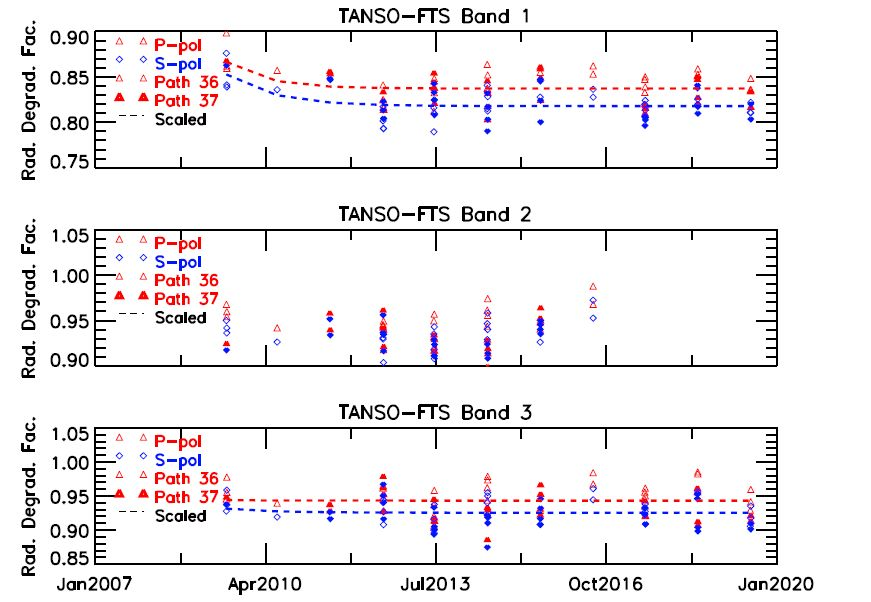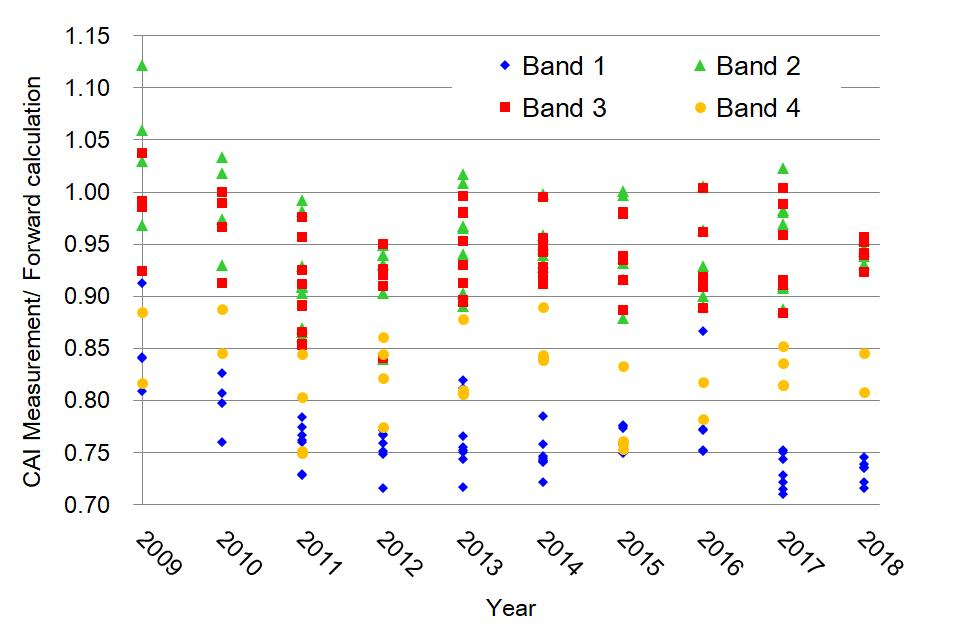TANSO-FTS (SWIR)
Analytical results from the annual vicarious calibration campaigns (VCC) in Railroad Valley (RRV), Nevada, U.S.A. show that the absolute radiometric response for TANSO-FTS-SWIR had very slow degradation response except the first two years (Fig. 1 (a)). In addition, VCC2015 shows there is no significant difference between the primary pointing system and the secondary unit. Therefore, there is no need to change the radiometric degradation factor (RDF) model. These data can be applied to the long-term complete L1B dataset. The error budget of VCC is estimated to be lower than the assigned value of 7%.
The calibrated spectral radiance given in units of W cm-1 str-1 with the correction of the degradation after launch has been added in the L1B V201 product.
TANSO-FTS (TIR)
For TIR calibrations of TANSO-FTS Band 4, frequent calibration using the blackbody (BB) and deep space (DS) can remove the response degradation and background radiation. During the VCC2011, the systematic error after calibration in each spectral window was analyzed, showing a higher bias of 2 K in L1B V130 in radiation from the cold upper atmosphere in the CO2 band at 650-700cm-1 [Kataoka et al., 2014]. Thereby the radiometric calibrations were modified in V161. Long-term comparison with sea surface temperatures (SST) monitored by NOAA buoys shows that the difference in monthly means are smaller than 1 K over six years [Kataoka et al., 2015].
TANSO-CAI
The vicarious calibrations at RRV indicate that the difference between pre-launch and initial on-orbit response is large in TANSO-CAI bands 1 and 4 but that the subsequent response change with time on orbit seems to be slow for all bands. Fig. 1 (b) indicates no degradation of TANSO-CAI since VCC2011.
Fig. 1 Radiometric degradation factor for nine years from ten annual vicarious calibration campaigns of (a) TANSO-FTS and (b) TANSO-CAI. Each symbol represents calibration points calculated from individual surface measurements. The lines in (a) show the model derived from the onboard solar diffuser data.
Vicarious Calibration Portal for Space-borne GHGs Sensors
Vicarious Calibration Portal for Space-borne GHGs Sensors introduces the information of radiometric calibration for high spectral resolution GHGs sensors (such as GOSAT, OCO-2, TRPOMI, OCO-3, and GOSAT-2) in Railroad Valley Desert Playa, NV, USA.
This website provides a long-term campaign data of surface reflectance, radio sonde, and airplane GHG data from 2009.

